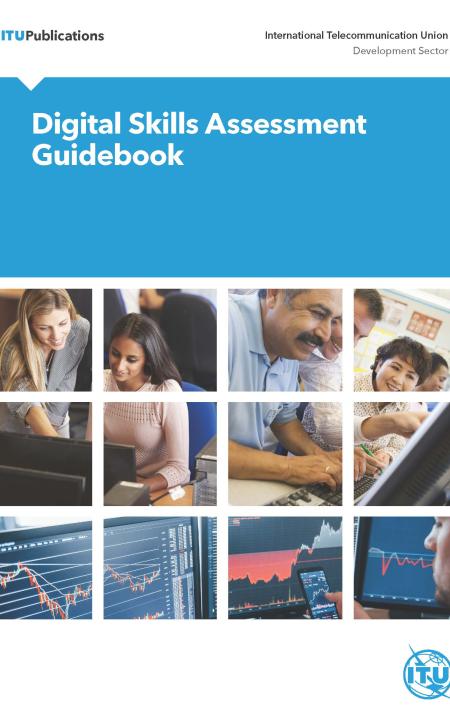
ITU’s Digital Skills Assessment Guidebook has been designed to serve as a comprehensive, practical step-by-step tool for national digital skills assessments. The guidebook can be used to determine the existing supply of a digitally skilled cohort at a national level, to assess skills demand from industry and other sectors, to identify skills gaps, and to develop policies to address future digital skills requirements. It is designed for use by policy-makers and other stakeholders, such as partners in the private sector, non-governmental organizations, and academia.
This guidebook draws on, and complements, the ITU Digital Skills Toolkit, which is part of ITU's commitment to the Global Initiative on Decent Jobs for Youth to tackle youth unemployment. Whereas the toolkit was designed to help policy-makers develop national digital skills strategies and roadmaps, this guidebook focuses on helping them identify national skills gaps and requirements, which can be addressed through targeted digital skills development policies and strategies. The results of a digital skills assessment exercise can serve as a concrete and necessary input into the national policy-making process.
The guidebook comprises the following five chapters:
- Chapter 1 reviews existing work on national digital skills assessments, discussing the advantages and disadvantages of digital skills assessment tools that can be employed as part of a national-level assessment.
- Chapter 2 provides a step-by-step approach for assessing the current supply of digital skills.
- Chapter 3 provides a step-by-step approach for determining a country’s current level of demand for digital skills and identifying any skills mismatch.
- Chapter 4 addresses future technology trends and how to conduct digital skills anticipation exercises.
- Chapter 5 contains a summary and conclusions.